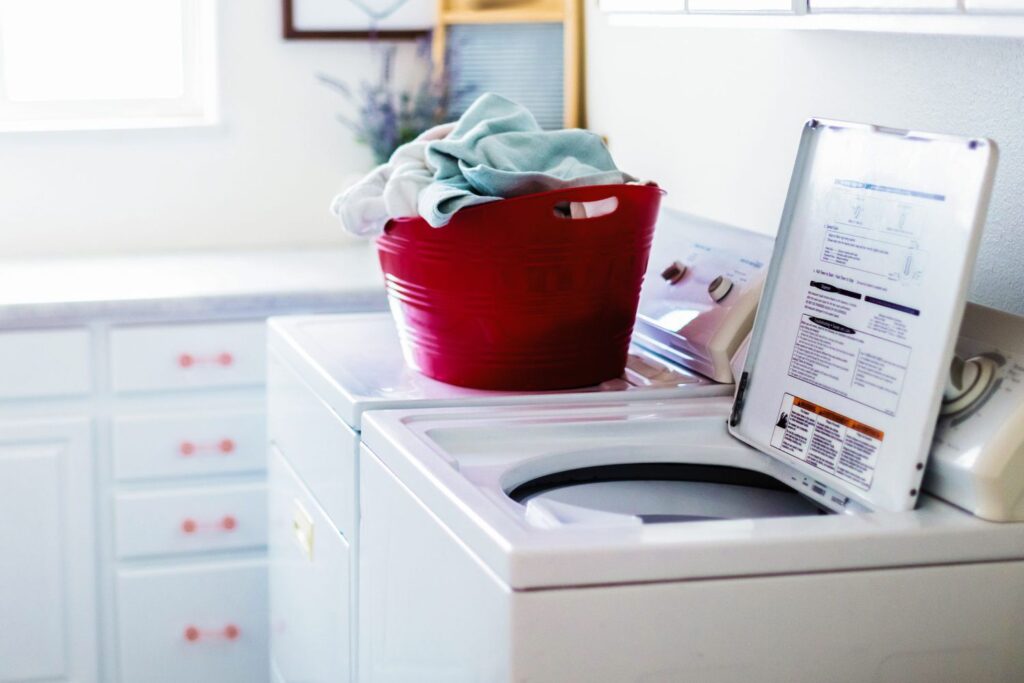Are you experiencing issues with your washing machine, such as foul odors or mold growth? Perhaps your clothes are not getting as clean as they used to. These are signs that your machine needs cleaning and maintenance.
In this article, we will discuss how to clean and maintain your washing machine to ensure optimal performance and prolong its lifespan. We will also provide troubleshooting tips for common problems.
Signs that your washing machine needs cleaning
There are several signs that your machine needs cleaning. One of the most common signs is a foul odor emanating from the machine. This odor is often caused by mold or mildew growth, which can occur in the damp environment of the washing machine.
Another sign that your machine needs cleaning is if you notice mold or mildew growth on the door gasket or drum. This can be a breeding ground for bacteria, which can transfer onto your clothes.
Finally, if your laundry is coming out of the washing machine dirtier than it went in, this is a sign that your machine needs cleaning. A buildup of dirt, grime, and detergent residue can prevent your clothes from getting clean.
How to clean a washing machine
Cleaning your washing machine is a simple process that can be done in a few easy steps. Here is how to do it:
Materials needed
- White vinegar
- Baking soda
- Microfiber cloths
- Cleaning toothbrush
- Bucket
Cleaning the detergent dispenser
Start by removing the detergent dispenser from the washing machine. Most dispensers can be easily removed by pulling them out. Fill a bucket with hot water and add a cup of white vinegar. Place the dispenser in the bucket and let it soak for 15-20 minutes. After soaking, use a cleaning toothbrush to scrub away any remaining buildup or residue. Rinse the dispenser with hot water and dry it thoroughly.
Cleaning the drum
Next, it’s time to clean the drum. Start by running a cycle with hot water and two cups of white vinegar. This will help to remove any buildup or residue inside the machine. Once the cycle is complete, sprinkle a cup of baking soda into the drum and run another cycle on hot water. This will help to neutralize any remaining odors and leave your machine smelling fresh.
Cleaning the exterior
Finally, it’s time to clean the exterior of the machine. Use a microfiber cloth and hot, soapy water to wipe down the machine’s exterior. Pay particular attention to the door gasket and any other crevices where mold or mildew can grow.
How to maintain a washing machine
Regular cleaning is essential for maintaining a washing machine, but there are other steps you can take to ensure your machine lasts for as long as possible.
Firstly, it’s important to check the hoses and connections regularly. Look for signs of wear or damage, such as cracks or leaks. If you notice any issues, replace the hoses or connections immediately.
Secondly, use the right detergent for your machine. Using the wrong detergent can lead to buildup and residue, which can cause problems with the machine. Always follow the manufacturer’s instructions for detergent use.
Finally, make sure you are loading the machine correctly. Overloading the machine can cause strain on the motor and other components, leading to problems down the line. Always follow the manufacturer’s guidelines for loading and use.
Troubleshooting common washing machine problems
Even with proper cleaning and maintenance, washing machines can still experience problems. Here are some common issues and troubleshooting tips:
The machine not draining properly
If your washing machine is not draining properly, there may be a clog in the drain hose or pump. Check for any obstructions and clear them if necessary. You may also need to replace the drain hose or pump.
Excessive noise during operation
Excessive noise during operation can be caused by a number of issues, including unbalanced loads or worn-out bearings. Check the load to make sure it is balanced and adjust if necessary. If the noise persists, it may be time to call in a professional for repairs.
Leaking water
If your washing machine is leaking water, the first thing to do is to check the hoses and connections for any leaks or damage. If there are no obvious issues, the problem may be a faulty pump or valve. In this case, it’s best to call in a professional for repairs.
Conclusion
In conclusion, cleaning and maintaining your washing machine is essential for optimal performance and longevity. Regular cleaning, checking hoses and connections, using the right detergent, and loading the machine correctly are all important steps for maintaining your machine. By following these tips and troubleshooting common problems, you can ensure that your machine runs smoothly for years to come.
FAQs
- How often should I clean my washing machine?
It is recommended to clean your washing machine at least once every six months, or more often if you notice signs of mold or mildew growth.
- Can I use bleach to clean my machine?
While bleach can be effective at killing bacteria and mold, it can also be harsh on your machine and cause damage over time. It’s best to use a mixture of white vinegar and baking soda for cleaning your washing machine.
- Can I use vinegar to clean my washing machine?
Yes, white vinegar is an effective and natural cleaning agent for washing machines. It can help to remove buildup, neutralize odors, and kill bacteria.
- How do I clean a front-loading washing machine?
Cleaning a front-loading washing machine is similar to cleaning a top-loading machine. However, it’s important to pay particular attention to the door gasket and drum, as these areas are more prone to mold and mildew growth.

